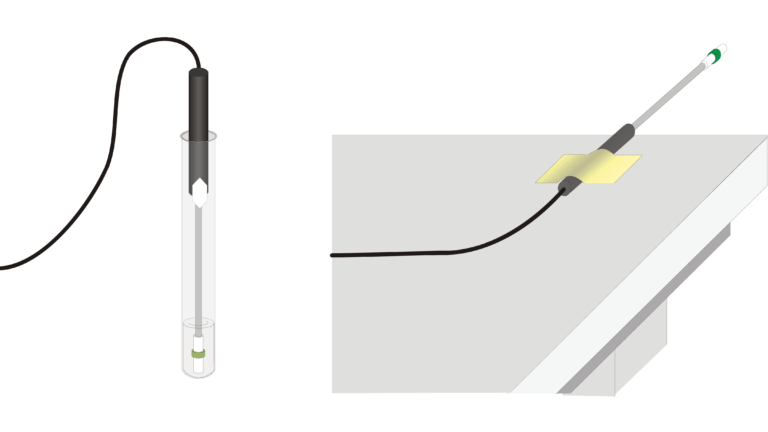Evaporation and Intermolecular Attractions
Experiment #9 from Chemistry with Vernier
- Education Level
- High School
- Subject
- Chemistry

Introduction
In this experiment, Temperature Probes are placed in various liquids. Evaporation occurs when the probe is removed from the liquid’s container. This evaporation is an endothermic process that results in a temperature decrease. The magnitude of a temperature decrease is, like viscosity and boiling temperature, related to the strength of intermolecular forces of attraction. In this experiment, you will study temperature changes caused by the evaporation of several liquids and relate the temperature changes to the strength of intermolecular forces of attraction. You will use the results to predict, and then measure, the temperature change for several other liquids.
You will encounter two types of organic compounds in this experiment—alkanes and alcohols. The two alkanes are n-pentane, C5H12, and n-hexane, C6H14. In addition to carbon and hydrogen atoms, alcohols also contain the -OH functional group. Methanol, CH3OH, and ethanol, C2H5OH, are two of the alcohols that we will use in this experiment. You will examine the molecular structure of alkanes and alcohols for the presence and relative strength of two intermolecular forces—hydrogen bonding and dispersion forces.
Objectives
In this experiment, you will
- Study temperature changes caused by the evaporation of several liquids.
- Relate the temperature changes to the strength of intermolecular forces of attraction.
Sensors and Equipment
This experiment features the following sensors and equipment. Additional equipment may be required.
Option 1

Correlations
Teaching to an educational standard? This experiment supports the standards below.
- International Baccalaureate (IB) 2025/Chemistry
- Structure 2.2.8—The nature of the force that exists between molecules is determined by the size and polarity of the molecules. Intermolecular forces include London (dispersion), dipole-induced dipole, dipole–dipole and hydrogen bonding.
- Structure 2.2.9—Given comparable molar mass, the relative strengths of intermolecular forces are generally: London (dispersion) forces < dipole–dipole forces < hydrogen bonding.
Ready to Experiment?
Ask an Expert
Get answers to your questions about how to teach this experiment with our support team.
- Call toll-free: 888-837-6437
- Chat with Us
- Email support@vernier.com
Purchase the Lab Book
This experiment is #9 of Chemistry with Vernier. The experiment in the book includes student instructions as well as instructor information for set up, helpful hints, and sample graphs and data.


